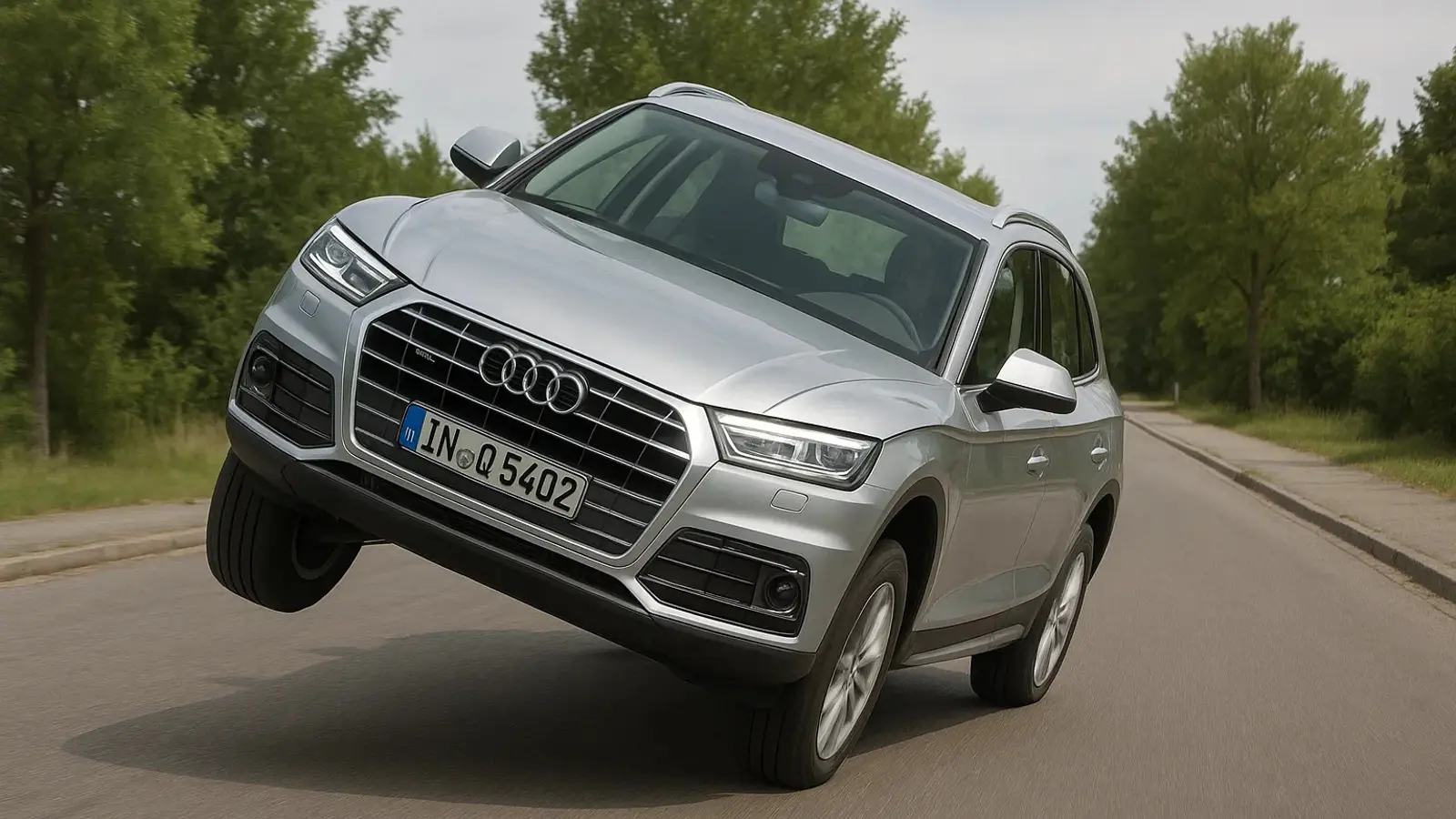Articles
Understanding moose test results and vehicle safety

The moose test, based on ISO 3888-2, exposes how center of gravity and weight affect SUV stability. Recent tests of Mazda CX-80 and VW Golf Mk8.5 highlight growing safety contrasts.
When a car encounters a sudden obstacle — an animal darting across the road, for example — its ability to swerve and recover quickly becomes critical. This is the scenario the moose test (or elk test) examines, standardized in ISO 3888-2. With the rise of heavier SUVs and electric vehicles, the test is regaining prominence.
Moose test: how it works
The concept is deceptively simple. The car drives through a series of S-shaped lane changes between cones — right, then left, then back — without braking, at progressively increasing speed. In the Latin NCAP 2025 protocol (v2.0.1), the conditions are spelled out: speed increments, tire requirements, ESC in default factory mode, and fail criteria for loss of control. Every tenth of a second, every millimeter of body roll, every microsecond of steering response matters.
Center of gravity, mass, suspension — the hidden culprits
A higher center of gravity (CoG) makes a vehicle more sensitive to lateral forces in abrupt maneuvers. In today’s landscape of SUVs and EVs, battery mass, body geometry, and soft suspension setups may conspire to produce excessive roll, slower reactions, and higher risk of losing control. This relationship is starkly visible in moose tests of contemporary crossovers, as shown in the cases below.
Cases worth your attention
Mazda CX-80 (2025 MY) stands out as a recent example. Independent tests revealed that this large three-row SUV reveals its weight: grip, roll, and response are not flawless. Reviewers frequently noted that it “shows its weight in moose & slalom” and yields modest results. By contrast, Volkswagen Golf Mk8.5 (2025 facelift) illustrates that thoughtful chassis updates and recalibrations can elevate handling in the same footprint — recent tests highlight smoother, more predictable behavior than in its earlier versions.
Why heavy vehicles remain more vulnerable
Modern vehicles grow heavier, batteries contribute significant mass, and body heights often increase to offer more cabin space. This reinforces roll in sudden lane changes and makes the ESC system’s performance critical. With identical architecture, a heavier configuration or softer suspension can degrade corresponding moose-test performance.
Why context matters — interpreting results fairly
You can’t take maximum speed alone at face value. It depends on many variables: tire quality, temperature, wear; vehicle load; driver technique; accuracy of cone layout. That’s why the 2025 Latin NCAP protocol mandates full reports and video evidence from manufacturers. When you read a test, look not just for “good vs. bad” but for the conditions in which that result was obtained.
What matters for a prospective buyer
– Seek test runs done in the exact configuration you will buy — same engine, wheels, suspension. – Review the full report, videos, and accompanying notes. – In your test drive, try sharp “S” maneuvers in safe conditions and judge how the car reacts — you may not set a record, but you’ll gain a sense. – Watch for whether the manufacturer issues software updates to ESC or adjustments to suspension — these can tangibly affect real-world handling.
A glance toward the future
Trends suggest that the moose-avoidance test will only gain importance. As the share of electric vehicles and SUVs rises, manufacturers will pay more attention to suspension architecture, ESC tuning, and body structural layout. For drivers and consumers, that means more comparative data and safer choices — and perhaps real breakthroughs in how agile and safe large vehicles can be.
2025, Oct 07 15:00


